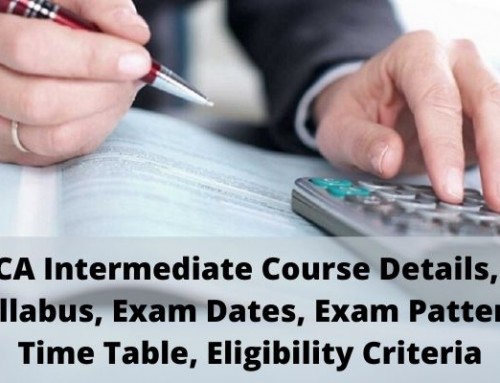Attend a Special CPLC Workshop on ‘Changes in MBA-CET paper pattern and it’s implications on Test-taking’ on Sat, 5-Mar from 4.00-7.00 p.m. at WeSchool, Matunga Central. FREE Video Lectures of Visual Reasoning questions from Actual CET and 2 MockCET papers in the new format for everyone attending the Workshop.
By now we know that Reasoning forms the most important part of the MBA-CET exam and accounts for about 37.5% of the total questions (75 Qs out of 200). In
fact, it is your ability to do well in reasoning questions that will decide how useful your score is. Thus, mastering reasoning questions forms the key to
getting into the top institutes through MBA CET. One more reason for this is that the kind of reasoning questions asked in the CET are not asked in any
other MBA entrance exams. Hence most students, even those who have prepared for exams like the CAT, struggle in the CET when it comes to reasoning.
Reasoning questions can be categorized into the following 7 types:
1. Logical Puzzles (Mathematical and Verbal)
2. Matrix Arrangement
3. Linear Arrangement
4. Circular Arrangement
5. Logical Data Sufficiency
6. Verbal Reasoning (Syllogisms)
7. Critical Reasoning
8. Special Reasoning Questions
1. Logical Puzzles
Type 1: Math Based Puzzles
1.
Complete the following series: 57 58 118 357 ?
(1) 1315 (2) 1075 (3) 1432 (4) 1071 (5) 1236
2.
If ‘+’ stands for division, ‘-‘ stands for addition, ‘x’ stands for subtraction, ‘÷’ stands for multiplication, then insert the missing signs in the
dashes given below.
4____3____2____20____2 = 0
(1) +, x, -, ÷ (2) -, ÷, x, + (3) -, x, +, ÷ (4) +, x, ÷, – (5) x, +, ÷, –
3.
Starting from a point ‘M’, Shekhar walked 18 metres towards south. He turned to his left and walked 25 metres. He then turned to his left and walked 18
metres. He again turned to his left and walked 35 metres and reached a Point ‘P’. How far is Shekhar from the point ‘M’ and in which direction?
(1) 10 metres West (2) 10 metres East (3) 10 metres South (4) 15 metres West (5) 35 metres West
4.
Four of the following five numbers are alike in a certain way and so form a group. Which is the one that does not belong to the group?
(1) 93 (2) 26 (3) 34 (4) 69 (5) 42
Type 2: Verbal Puzzles
Directions for questions 5 and 6
: Answer the following questions based on the following alpha-numeric series
P T 5 M 3 9 B K R 4 D 8 F G 7 6 Y 2 I H P W J N
5.
4 of the following 5 characters are alike with respect to their position in the above sequence and form a group. Which is the one that does not belong
to that group?
(1) T (2) M (3) K (4) R (5) D
6.
Which character is the 6th to the right of the 14th character from the left hand, if the second half of the above series is
reversed?
(1) Y (2) 1 (3) B (4) 9 (5) H
7.
If the word ‘COURAGEOUS’ is written as ‘HFPVTDPVSB’, how will you write the word ‘COWARDLY’?
(1) HFMZDPXB (2) SEMZDPXB (3) HFZMPDXB (2) SEZMDPXB (5) SEMZPDXB
8.
While walking with his friend, Mahesh meets another man whose mother is the wife of Mahesh’s father’s only son. How is the man related to Mahesh?
(1) Son (2) Nephew (3) Cousin (4) Uncle (5) Father
9.
If a word can be formed using the 1st, 3rd, 5th and 8th letter of the word ‘CONTEMPORARY’ then what would
be the first letter of that word. If no such word can be formed, mark the answer as (4) and if more than one word can be formed, mark the answer as
(5)?
(1) O (2) C (3) N (4) No word (5) More than one word
10.
How many such pairs of letters are there in the word ‘ADVERTISE’, each of which has as many letters between them in the word as they have in the
English alphabet?
(1) None (2) One (3) Two (4) Three (5) None of these
2. Matrix Arrangement
A building of seven floors (the ground floor counted as first floor) is owned by seven different persons (one person owns one floor). Six out of these
seven floors are used for different businesses while one of the floors is vacant.
The floor that has the library is owned by K and it has three floors below it. There are three floors between the Insurance Company and the Newspaper
office. The Grocery and the Newspaper office have one floor between them. The Bank is below the Travel Agency and they have two floors between them.
The Newspaper office is just below the Library.
J’s floor is below K’s floor and there are two floors between them. O owns a floor below P’s floor and there are two floors between them. N’s floor is
immediately below L’s floor. M is one of the owners.
There are usually 5 questions following the above information.
3. Linear Arrangement
Twelve cars viz. Mercedes, Swift, Santro, Accord, Innova, Polo, Punto, Figo, Civic, City, Ferrari and Landrover are parked in two parallel rows
containing six cars each, in such a way that there is an equal distance between adjacent cars. The cars parked in row-l are parked in such a manner
that the driver seated in the cars would face the South. In row-2 cars are parked in such a manner that the drivers seated in these cars would face the
North. Therefore, in the given parking arrangement each car parked in a row faces .another car of the other row.
• Mercedes being a big car must be parked at one of the extreme ends. Mercedes is parked second to the left of Santro. Santro faces Figo.
• Punto and Innova are parked immediately next to each other. Neither is parked next to Figo or Santro.
• Civic is parked in such a manner that its driver when’ seated in the parked car would face South. Civic is parked third to the left of Polo.
• City is parked in such a manner that it faces Ferrari.
Ferrari is parked second to the left of Landrover. Landrover faces North and is not parked next to Figo.
• Swift is parked third to the right of Ferrari and faces Innova.
(NOTE: Left and right parking directions are with reference to the driver as if the driver is seated in the car.)
There are usually 5 questions following the above information.
4. Circular Arrangement
Six friends P, Q, R, S, T and V are sitting around a circular table facing either centre or outside.
• P sits third to the left of R. R faces the centre.
• V sits second to left of P.
• Q sits second to right of V.
• T sits to immediate right of Q.
• Immediate neighbors of P face direction opposite to that of P.
• S sits second to left of R.
There are usually 5 questions following the above information.
5. Logical Data Sufficiency
Directions for questions 13 to 16:
Each of the questions below consists of a question and two statements numbered I and II given below it. You have to decide whether the data provided in
the statements are sufficient to answer the question.
Type 1: Arrangement Based
13.
Who is sitting around Rahul around a rectangular table?
(i)
Mohan and Sunil are sitting next to each other
(ii)
Abhay is sitting to the right of Sunil
Type 2: Relationship Based
14.
How is Q related to D?
(i)
B and C are sisters of D
(ii)
M is the husband of Q
Type 3: Coding Based
15.
What is code for ‘drink’ in a code language?
(i)
‘pic natos’ means ‘go drink it’ in that language
(ii)
‘jana pod’ means ‘drink some water’ in that language
Type 4: Comparison Based
16.
How many people are between P and Q when P, Q, R, S, T, U are arranged in decreasing order of their heights?
(i) P is taller than R but not the tallest
(ii) There are two people who are taller than R, U but shorter than S, T.
6. Verbal Reasoning / Syllogisms
These are questions based on finding conclusions and assumptions based on a set of statements, finding strong and weak arguments from a set of arguments,
finding the degree of truth and falsity in conclusions, determining the correct courses of action, finding which statement is a cause and which one is an
effect, and critical reasoning. We will be dedicating full article to syllogisms and hence will refrain from giving any examples here.
7. Critical Reasoning
India and China make competing plans for the river Brahmaputra’s precious waters. The dams and hydropower projects planned are stated to have a
potential of about20,000 MW. There is, however, apprehension in the Indian water and power ministries that China’s similar dam construction programs
all the same river could adversely affect this potential.
A.
Brahmaputra river passes through both the countries.
B.
India should take the lead and begin construction of dams for hydropower projects before China does.
C.
Building cascades of dams at multiple locations in the river would have massive environmental impacts.
D.
A dam built by China on river Xang, close to Indian border, led to severe floods in India and some parts of China last year.
E.
Similar dams built on the river Xang which passes through both the countries did not affect the power generating capacity of either dam.
Q1. Which of the statements numbered (A); (B), (C), (D) and (E) mentioned above represents an assumption implicit in the given paragraph or an
inference which can be drawn from it?
A. Only A B. Only B C. Only.C D.Only D E. Both A and C
Q2. Which of the statements numbered (A), (B). (C), (D) and (E) mentioned above would weaken the case for both the countries to build dams on the
river?
A. Only A B. Only B C.Only C D.Only D E. Both C and D
Q3. Which of the statements numbered (A), (B), (C), (D) and (E) mentioned above would case India’s apprehensions regarding China’s similar dam
construction projects?
A. A B. B C.C D.D E. E
Q4. Which of the statements numbered (A), (B), (C), (D) and (E) mentioned above would best represent a course of action which can be taken by the
Indian government to counter China’s competing plans?
A. A B. B C.C D.D E. E
8. Special Reasoning Questions
Type 1: Sequential Output Tracing
In these questions, an input statement is given (that can consist of words and numerals). This statement is sequentially arranged in different steps. You
need to crack the logic of re-arrangement and answer the questions pertaining to a different input statement.
Type 2: Decision Making
In these questions, certain conditions for selection of candidates into an institute or an organization are given. Based on these you need to take suitable
course of action on different candidates.
Break-up of Reasoning Questions in the past CET papers.
|
2009 |
2010 |
2011 |
2012 |
2014 |
2015 |
|
| Matrix Arragements |
5 Qs |
3 Qs |
13 Qs |
21 Qs |
5 Qs |
5-10 Qs |
| Linear / Circular Arrangements |
5 Qs |
5 Qs |
8 Qs |
10 Qs |
25 Qs |
5-10 Qs |
| Logical Puzzles |
35 Qs |
27 Qs |
17 Qs |
24 Qs |
24 Qs |
15-20 Qs |
| Decision Making |
10 Qs |
10 Qs |
– |
– |
– |
8-10 Qs |
| Sequential Output Tracing |
– |
5 Qs |
6 Qs |
7 Qs |
6 Qs |
– |
| Logical Data Sufficiency |
5 Qs |
– |
3 Qs |
5 Qs |
5 Qs |
– |
| Critical Reasoning |
– |
10 Qs |
32 Qs |
5 Qs |
4 Qs |
9-10 Qs |
| Syllogisms |
25 Qs |
15 Qs |
6 Qs |
6 Qs |
11 Qs |
10-15 Qs |
|
Total |
85 |
75 |
85 |
78 |
80 |
65-70 |












